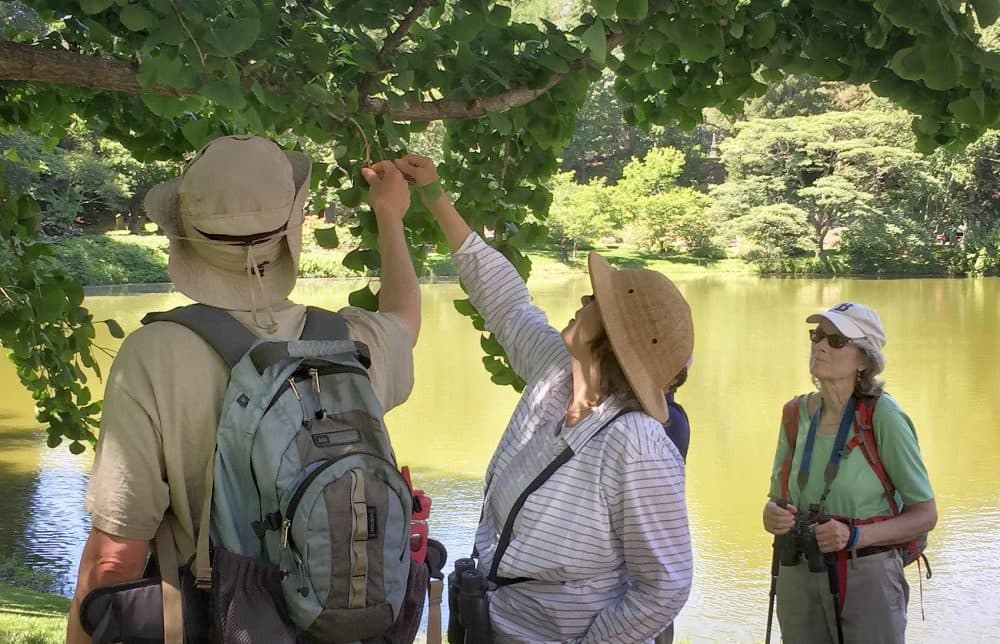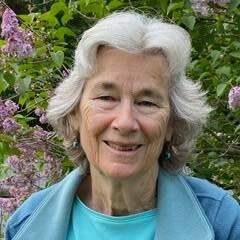Advertisement
Commentary
Weird Autumn Warmth As The New Normal: One Worried Writer’s Response

It’s November 6. By this date, I should be cutting dead perennials and sweeping up the last leaves in our yard. Instead, I’m clipping bright orange dahlias for a flower arrangement. Nearby, a columbine — usually a spring flower — sports a delicate pink and yellow blossom. Lavender, zinnias and bee balm have faded in our pollinator garden, but they’re still colorful enough to attract a sleepy native bee. Two houses down, our neighbors are picking raspberries and tomatoes from their front yard. We heard frost warnings last week, but the ice never came.
For the 20 years we’ve lived in Watertown, I’ve kept a garden journal. I note bloom times for a few key plants, such as daffodils, peonies and our Zumi crabapple. I keep track of last frost dates in the spring, the arrival of migratory birds and the date when I stake the emerging peonies so that they don’t fall over under the weight of their blossoms.
Glancing through the notebook today, I see I’ve been pushing peony hoops into the ground in April or even March in recent years, rather than in May, as I did in the past. Our growing season arrives earlier and stays longer than in previous decades.
Last month was Boston's warmest October in 70 years. Where the mean temperature for the month is usually 53 or 54 degrees, it was 61.4 degrees this year. Weather forecasters are calling for a high today of 73. The casual observer simply describes this weather pattern as “weird.” My son and his wife, scientists who study climate patterns, would probably say it’s “the new normal” — a phrase full of foreboding.
While we bask in the warmth of this fall for a moment, we have to fear for our children and grandchildren’s future, and for the health of our planet. We know what these changes portend for the climate. We’ve seen stark results this fall, from the devastating storms in Houston, Puerto Rico and the Virgin Islands, to the fires in the West. Who could imagine a Pacific cyclone barreling up the Atlantic coastline? Yet that’s what happened recently, when howling winds and drenching rains left hundreds of thousands of New England residents in the dark, some for days.
Many of us are taking action. We change our habits to use less energy, write letters to the editor, call our state and federal representatives, join climate marches, and sign petitions. My own interest in the changes taking place in nature also led me to join a group of citizen scientist phenology volunteers at Mount Auburn Cemetery. Led by ecologist Brooks Mathewson, we monitor specific trees in the cemetery on three different trails, noting the dates in the spring when they set buds, flower, sprout new leaves and fruit — or, in the fall, when fruit falls and their leaves change color and drop.
By this date, I should be cutting dead perennials and sweeping up the last leaves in our yard. Instead, I’m clipping bright orange dahlias for a flower arrangement.
(The dictionary defines “phenology” as the “periodic study of biological phenomena, such as flowering, breeding and migration, in relation to climate conditions.” Who knew I’d been keeping a phenology journal?)
Our group will record data for a few more weeks, but Mathewson reports we can already see the effects of the unusually warm weather in the trees. “Warmer temps are translating into later color change,” he says. “And the colors appear to be more muted this year, perhaps due to warmer and drier conditions.” On a personal note, Mathewson’s observations of his own garden mirror my own: His tomatoes, eggplant and beans are all “growing as if we are in late summer versus mid-fall.”
“It’s going to be another beautiful day,” the local weather announcer tells us. Indeed, it’s been lovely to enjoy these warm temperatures. I was pleased to hang my clothes on the line this morning, to walk up the street for a newspaper without wearing gloves — and my husband enjoyed seeing fresh dahlias on our breakfast table.
But I can’t escape the feeling of dread that accompanies this warm weather. So tomorrow I’ll head back to the cemetery to walk the Blue Phenology Loop. With data sheet and clipboard in hand, I’ll look for acorn drops under the white and red oaks and check YES under the column for Fallen Fruit. I’ll note that last week’s high winds stripped all the sugar maple leaves. I’ll shy away from the malodorous, sticky droppings from the female ginkgo, which announces her fruit from a great distance, but check YES for her Fallen Fruit.
Eventually, the data we collect will be sent to a national database of citizen scientist observations. It will take far more concerted actions, on the part of people and their governments, to slow the pace of warming. Climate change presents enormous challenges to all living things. Solutions — such as those presented at the U.N. Climate Conference in Bonn, Germany, that begins Monday — must come from governments, as well as from billions of people worldwide. We can't do it without them — but they can't do it without us.
